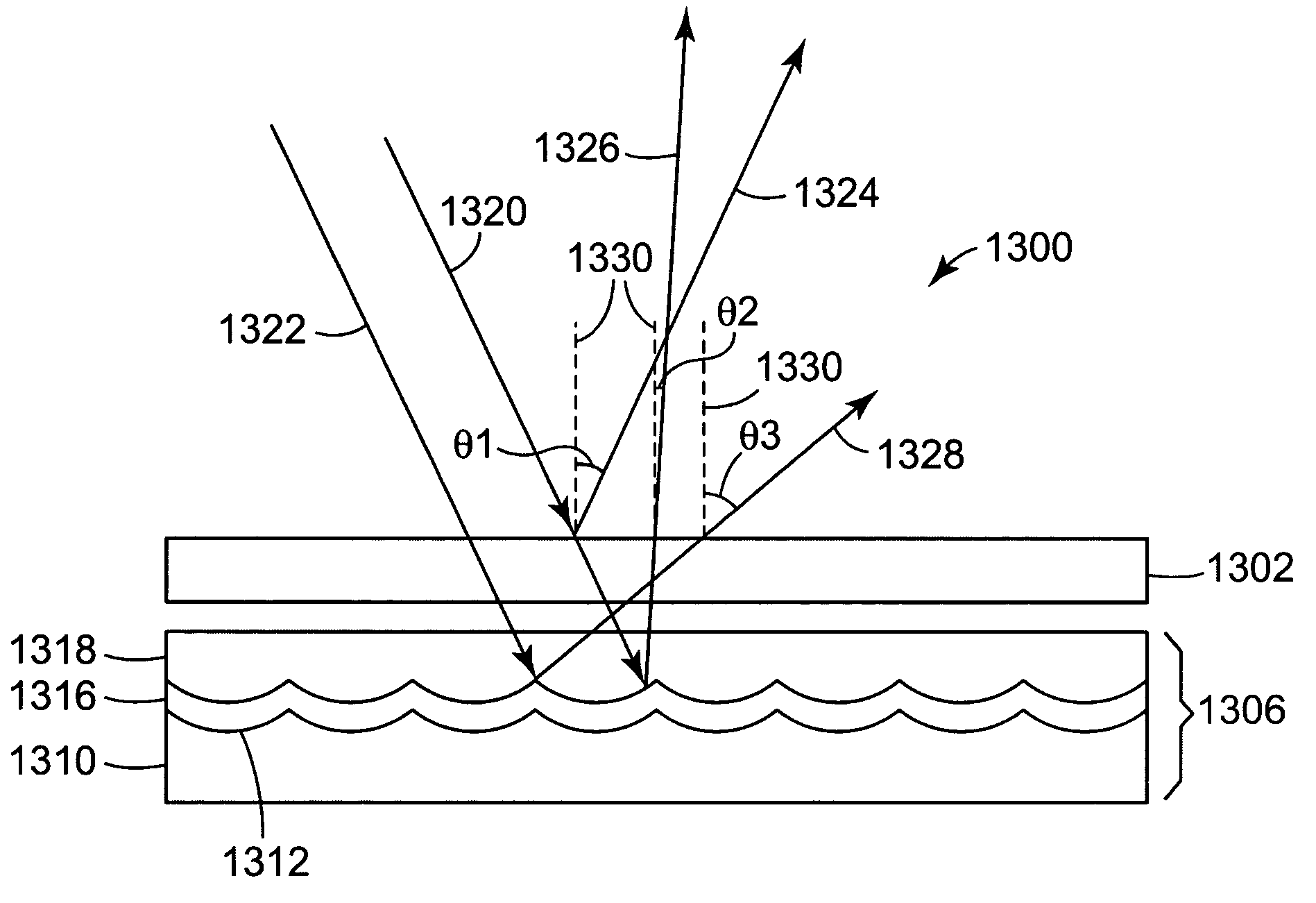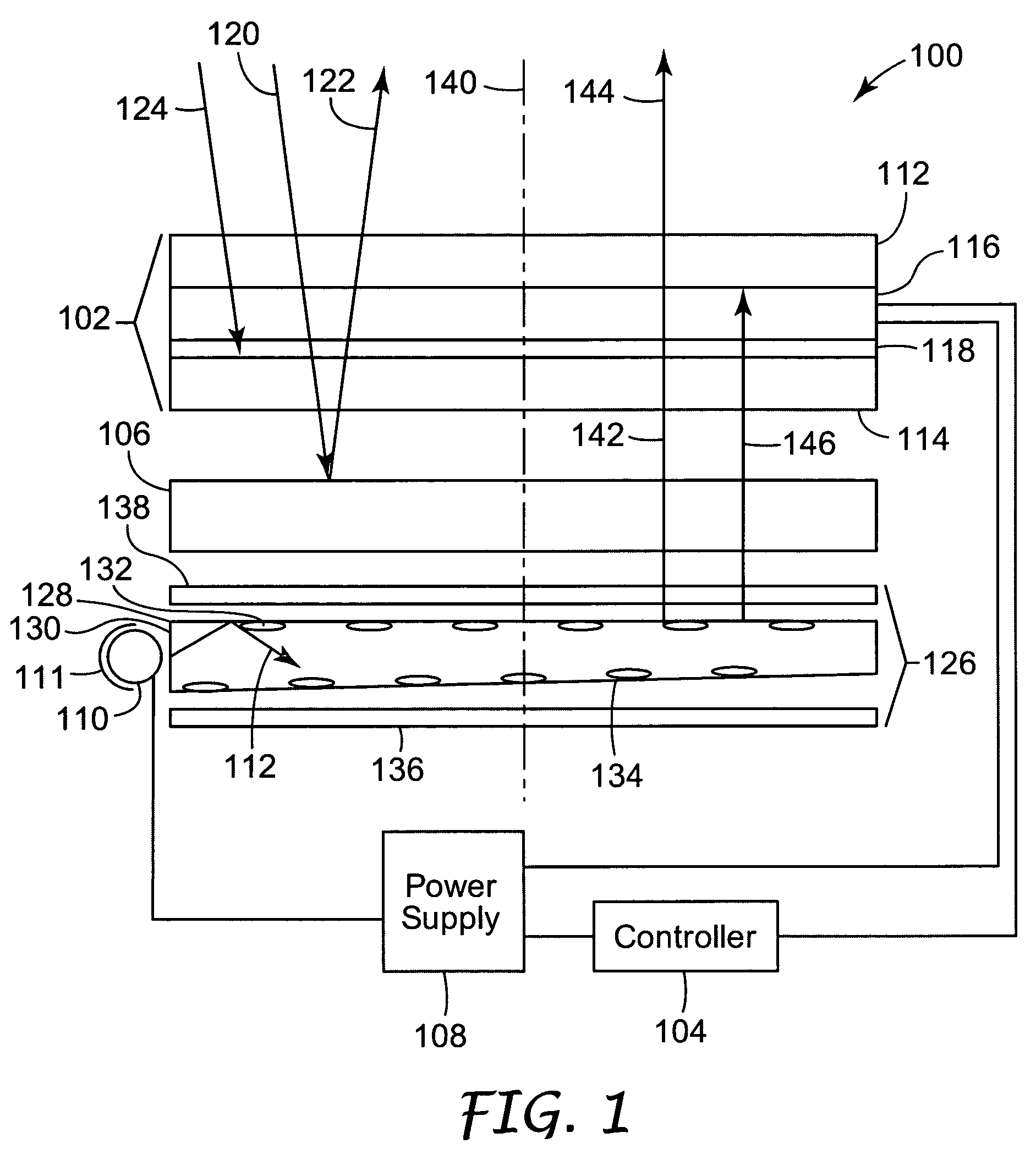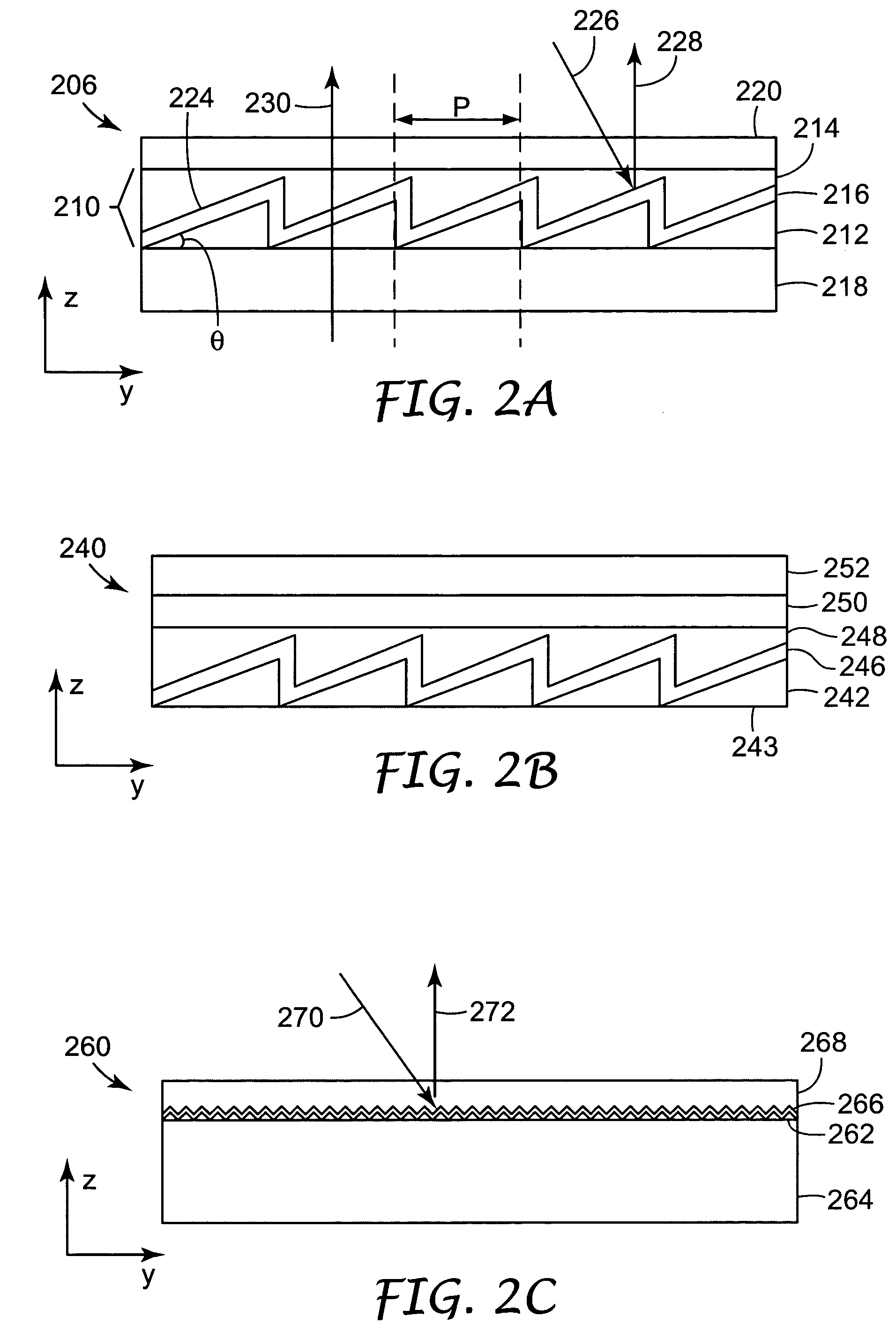Structured transflectors for enhanced ambient and backlight operation of transmissive liquid crystal displays
a liquid crystal display and transflector technology, applied in the field of displays, can solve problems such as difficult image viewing, and achieve the effects of improving image viewability, high ambient light levels, and easy operation
- Summary
- Abstract
- Description
- Claims
- Application Information
AI Technical Summary
Benefits of technology
Problems solved by technology
Method used
Image
Examples
example
[0115]A molding tool for molding a structured surface was formed by diamond turning a copper drum. The drum was rotated and a thread cut around the drum surface. Design parameters for the tool were that the thread had a pitch of 39.8 μm and a nominal depth of 0.53 μm, to give a maximum expected slope of 3°. The thread was cut with a diamond tool having a cutting edge with a radius of 375 μm. The depth of the thread cut was varied by driving the depth of the cutting tool with a predetermined sinusoidal variation of 1.16 μm, to produce a pitch of 87.6 μm. The maximum expected slope of the sinusoidal cut was 3°.
[0116]The tool was used to form a structured surface on a substrate using the following method. A resin was distributed between a layer of polyester and part of the molding tool. The resin was 74 wt. % aliphatic urethane, 25 wt. % hexanediol diacrylate and 1 wt. % Darocur 1173, 2 hydroxy-2-methyl-1 phenyl-propan-1-one. The resin was UV cured by directing UV light through the pol...
PUM
| Property | Measurement | Unit |
|---|---|---|
| refractive index | aaaaa | aaaaa |
| refractive index | aaaaa | aaaaa |
| refractive index | aaaaa | aaaaa |
Abstract
Description
Claims
Application Information
 Login to View More
Login to View More - R&D
- Intellectual Property
- Life Sciences
- Materials
- Tech Scout
- Unparalleled Data Quality
- Higher Quality Content
- 60% Fewer Hallucinations
Browse by: Latest US Patents, China's latest patents, Technical Efficacy Thesaurus, Application Domain, Technology Topic, Popular Technical Reports.
© 2025 PatSnap. All rights reserved.Legal|Privacy policy|Modern Slavery Act Transparency Statement|Sitemap|About US| Contact US: help@patsnap.com



